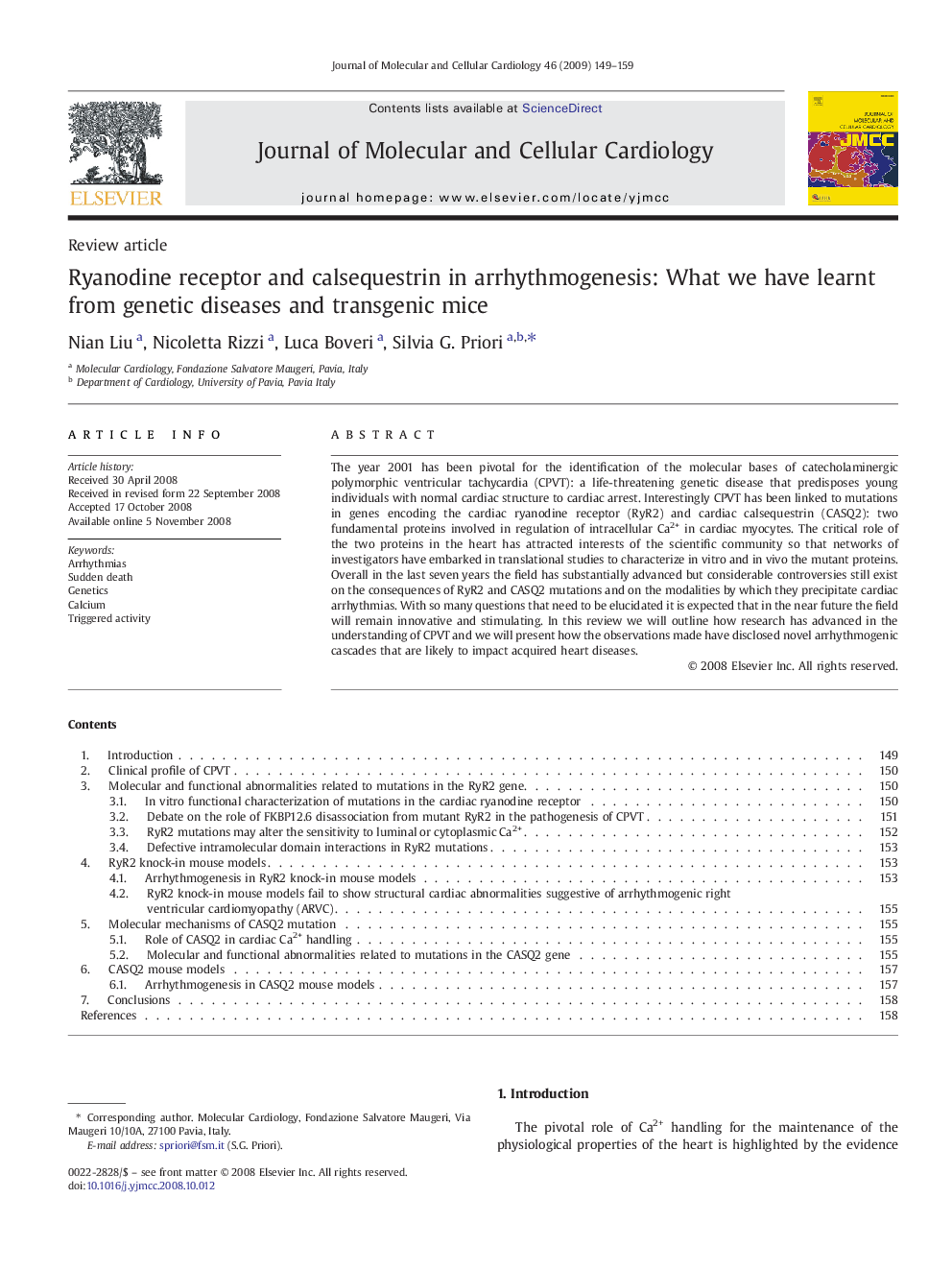| کد مقاله | کد نشریه | سال انتشار | مقاله انگلیسی | نسخه تمام متن |
|---|---|---|---|---|
| 2191537 | 1097864 | 2009 | 11 صفحه PDF | دانلود رایگان |

The year 2001 has been pivotal for the identification of the molecular bases of catecholaminergic polymorphic ventricular tachycardia (CPVT): a life-threatening genetic disease that predisposes young individuals with normal cardiac structure to cardiac arrest. Interestingly CPVT has been linked to mutations in genes encoding the cardiac ryanodine receptor (RyR2) and cardiac calsequestrin (CASQ2): two fundamental proteins involved in regulation of intracellular Ca2+ in cardiac myocytes. The critical role of the two proteins in the heart has attracted interests of the scientific community so that networks of investigators have embarked in translational studies to characterize in vitro and in vivo the mutant proteins. Overall in the last seven years the field has substantially advanced but considerable controversies still exist on the consequences of RyR2 and CASQ2 mutations and on the modalities by which they precipitate cardiac arrhythmias. With so many questions that need to be elucidated it is expected that in the near future the field will remain innovative and stimulating. In this review we will outline how research has advanced in the understanding of CPVT and we will present how the observations made have disclosed novel arrhythmogenic cascades that are likely to impact acquired heart diseases.
Journal: Journal of Molecular and Cellular Cardiology - Volume 46, Issue 2, February 2009, Pages 149–159